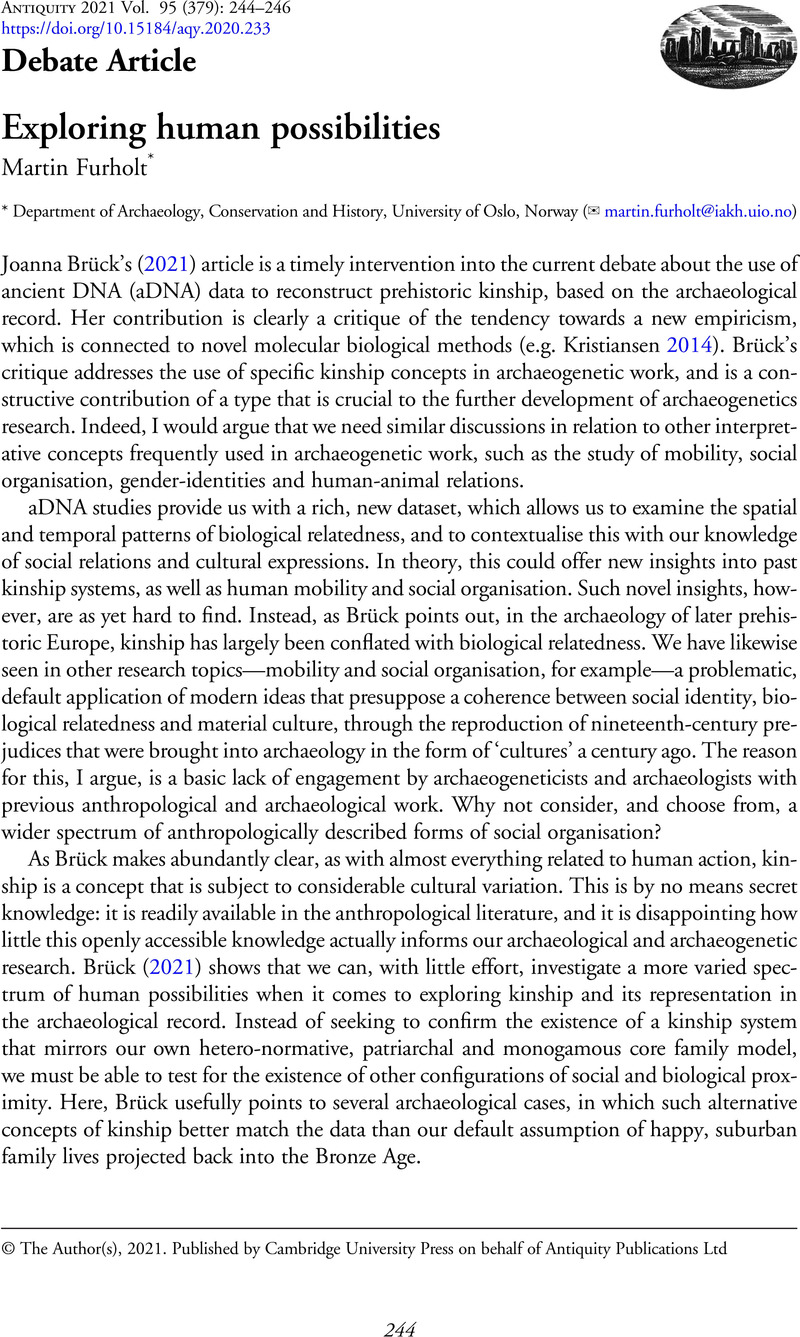Crossref Citations
This article has been cited by the following publications. This list is generated based on data provided by Crossref.
Brück, Joanna
2021.
Kinship: politics and practice.
Antiquity,
Vol. 95,
Issue. 379,
p.
249.
Ribeiro, Artur
2024.
On Traces, Clues, and Fiction: Carlo Ginzburg and the Practice of Archaeology.
Open Archaeology,
Vol. 10,
Issue. 1,





